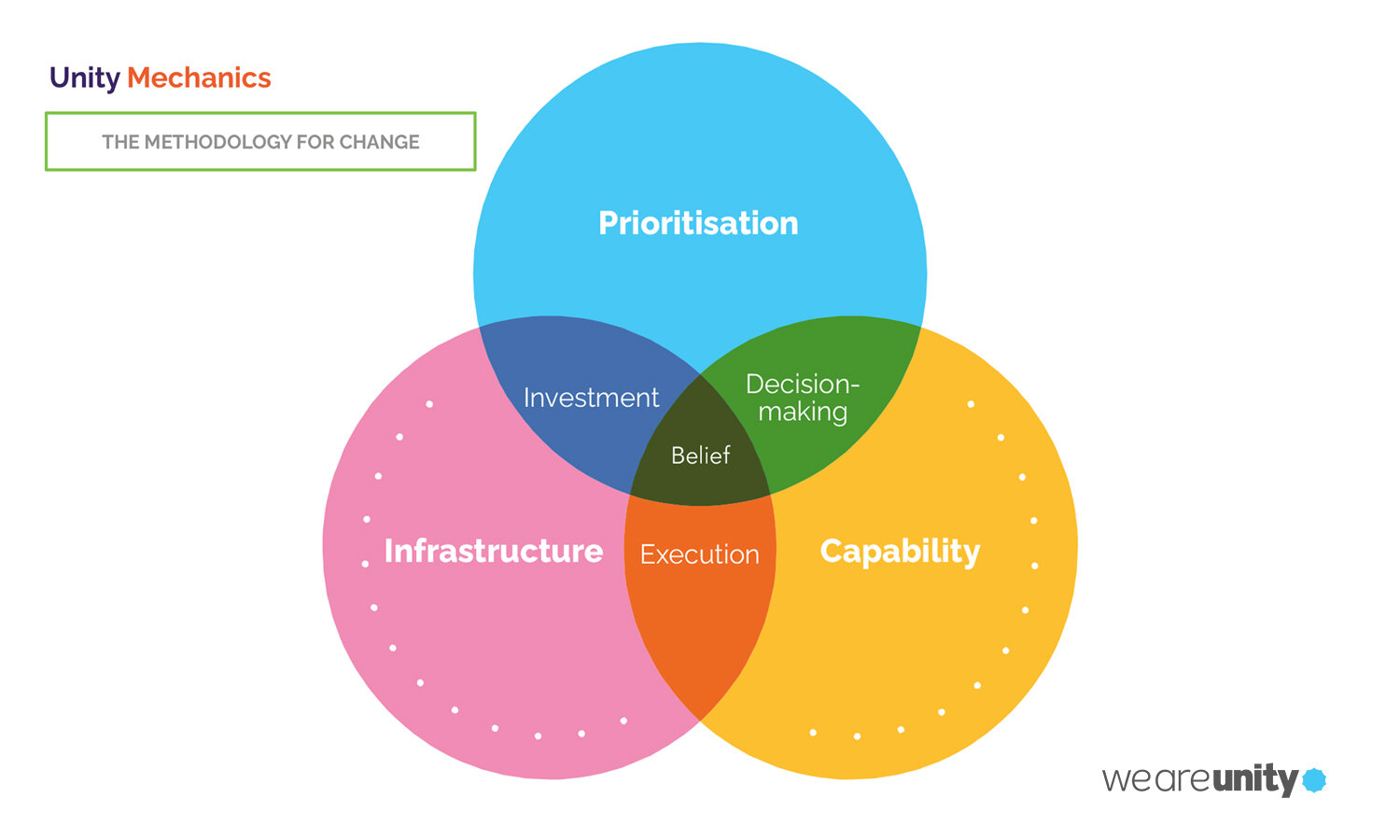The future (of work) is now
Future Ways of Working. The phrase has been a hot topic of late, with a plethora of books, articles, podcasts (plug intended) and whitepapers published (and re-published) in response to the pandemic. But beyond a cool acronym (FWOW) and a Google Search uplift - it has uncovered an interesting balancing act, and plenty of curious questions from CEOs….
“How do I maintain performance and productivity without the burning platform of COVID-19?”
“Progressive ways of working are now an expectation of top talent, not a nice to have. What is the risk of not doing anything?”
“Only 40% of my employees want things to return to the way they were pre-COVID. How can I understand and communicate the benefits of new ways of working to the board in order to future proof our business?
In a bid to unpack FWOW and make it practical for our community, we’ve spent the past four weeks exploring what it means for Progressive HR leaders, CEOs and Execs at ASX and Privately Listed Companies. And as a precursor to our Future Ways of Working Study, to be published next February in partnership with Macquarie Business School (leave your details via this link to lock your copy down) - we couldn’t help but share some early insights.
But before we do, we must address a simple question: what exactly is this ‘Future Ways of Working’ and why is it important for progressive organisations?
Put simply, Future Ways of Working is about consciously designing when, where and how things get done, in order to accelerate the delivery of a business' vision and strategy.
FWOW is not a new concept, but 2020 has seen the pace accelerating towards virtual working, automation and increased corporate socialism. For those who were already one step-ahead of the digital transformation curve, the exciting news is that some of the legwork may already be done, meaning we can move away from hygiene factors toward a focus on genuine differentiators.
So what has this ‘accelerated glimpse’ into the future of work taught us so far, and how are businesses applying it to their next chapter?
Here’s what we discovered;
Informed Choice; The no.1 change principle when designing future ways of working has become ‘choice’. Progressive organisations are prioritising outcomes over outputs and allowing employees to make smart choices about how and where they work in order to achieve the desired outcome. Some organisations are providing employees with an outcomes-based decision making framework in a bid to drive informed decision making at an individual level. Despite this, it seems the one non-negotiable activity is ‘new thinking’, which has been suggested to require in-person connection to enable the chemistry and energy transfer required to fuel creativity and innovation.
Work from home, to work nearby; The next big innovative investment that corporates are considering is the Work Near Home hub and spoke model. Building and/or renting multiple offices near employee geographies is bringing a new option to the table for employees, rather than the basic home or central office hybrid approach adopted during the pandemic.
Data-driven decision-making; Virtual work environments have created a plethora of new data that can aid in making data-driven decisions about your human capital. From utilising organisational network analysis (ONA) to understand collaboration or even isolation, progressive organisations are rethinking the way they utilise both internal and passive data sources to gain clear understanding about what's driving or hindering company performance. One progressive organisation has created a monthly forum where customer, culture and finance teams come together to correlate data in new ways to identify potential cultural danger pockets. The trick here is to focus on outcomes, not presenteeism – because tracking screen time is not valuable insight in isolation.
Sustainable wellbeing; Whilst some employers are further humanising wellbeing via in-house psychologists and wellness coaches, other employers are beginning to monitor employee screen time to better manage sustainable wellbeing through the use of additional data insights. Meanwhile, corporates are continuing to invest in training for Leaders to help them establish chemistry and maintain energy through a camera, to ensure they are positively contributing to the wellbeing and overall experience of their remote employees.
Permission to simplify; For many, Future Ways of Working is more about what can be taken away than what should be added in. By adopting an elimination and simplification mindset, organisations can strip out the outdated and outgrown systems, symbols and processes that are holding the organisation back. For example, one leading Australian insurance business has simplified its strategic initiatives from 60 priorities down to 10.The pandemic has given permission for change and opened the door to new norm formation, by breaking down the limited mindsets and beliefs about what can, and can’t be done.
Blended for success; Along with the principle of choice, the technology principle for many is “blended.” Beyond formalising the use of collaboration and video technologies adopted during C-19, new meeting etiquette will see all individuals required to sign in on their own devices - even when in shared meeting rooms. For others, 360 cameras will be fitted on boardroom tables to create a live experience for viewers at home. Meanwhile, AI role design will see blended roles for people and robots, in a bid to improve productivity (speed) and resulting business outcomes (more time for employees to be involved in critical decision-making). One leading beverage company has redesigned the working day for its factory employees, removing three human decision making checkpoints and replacing them with AI technology.
In our role designing Future Ways of Working for our clients, we refined our Future Ways of Working process into four steps that involve diagnosing and focusing the conversation upfront through data, insights and leadership alignment – in order to get to a strategy that balances tensions and delivers lasting change.
And then it’s about implementing sustainable change using the core principles of We Are Unity’s change methodology, Unity Mechanics.
Unity Mechanics has been designed to make sure an organisation’s executional, decision making capabilities and its investments are all designed in harmony to support the desired outcome.
Strategic prioritisation is needed to realise change, along with clear strategic direction and visible leadership.
The right infrastructure is needed to make sustainable change happen efficiently: this includes governance frameworks, data, technology, processes and systems, and environment - all of which are drivers of effective change that need to be carefully evaluated.
The right capability means ensuring the organisation has the right leadership, skills, and knowledge to support the change.
If you'd like to explore Future Ways of Working with our team of data analysts, behavioural scientists and creatives, why not get in touch with our team. We can discuss your unique requirements. you can also download a copy of our FWOW toolkit - developed through our tried and tested process with clients.


